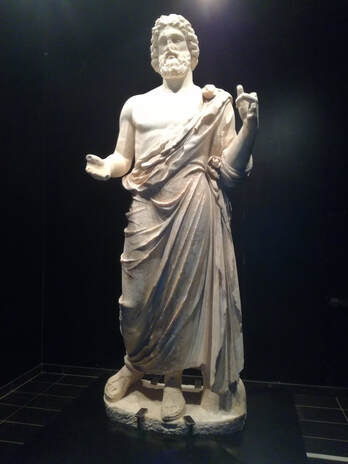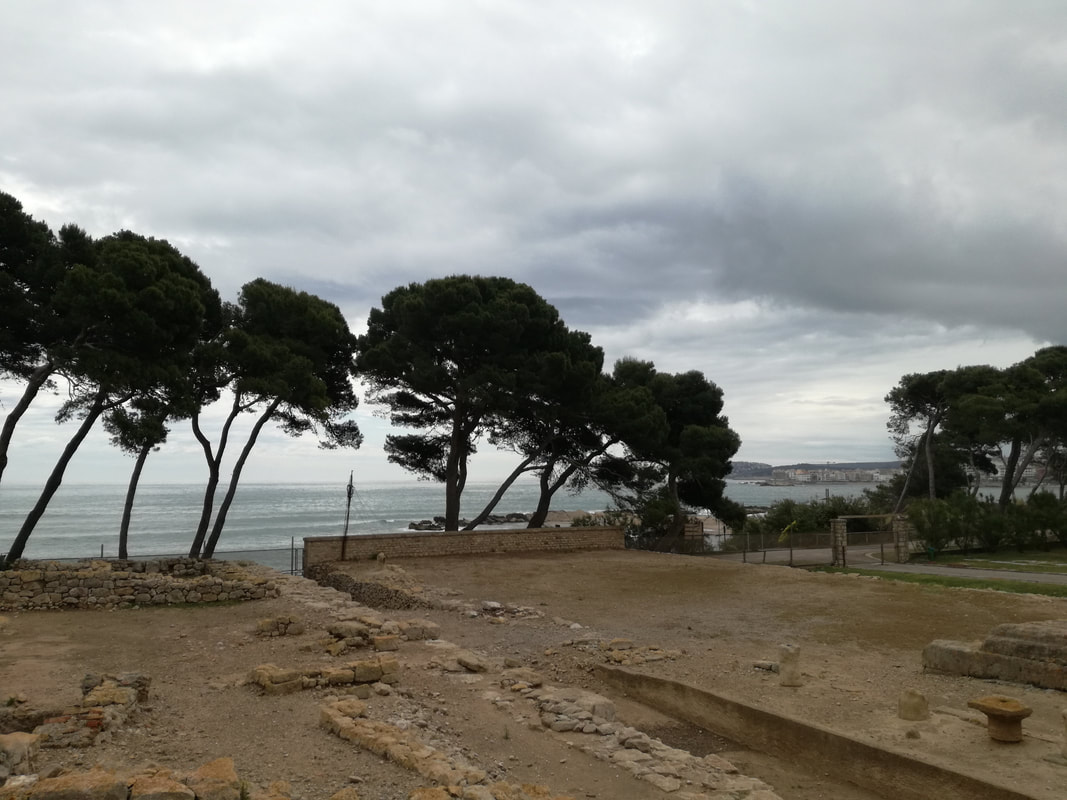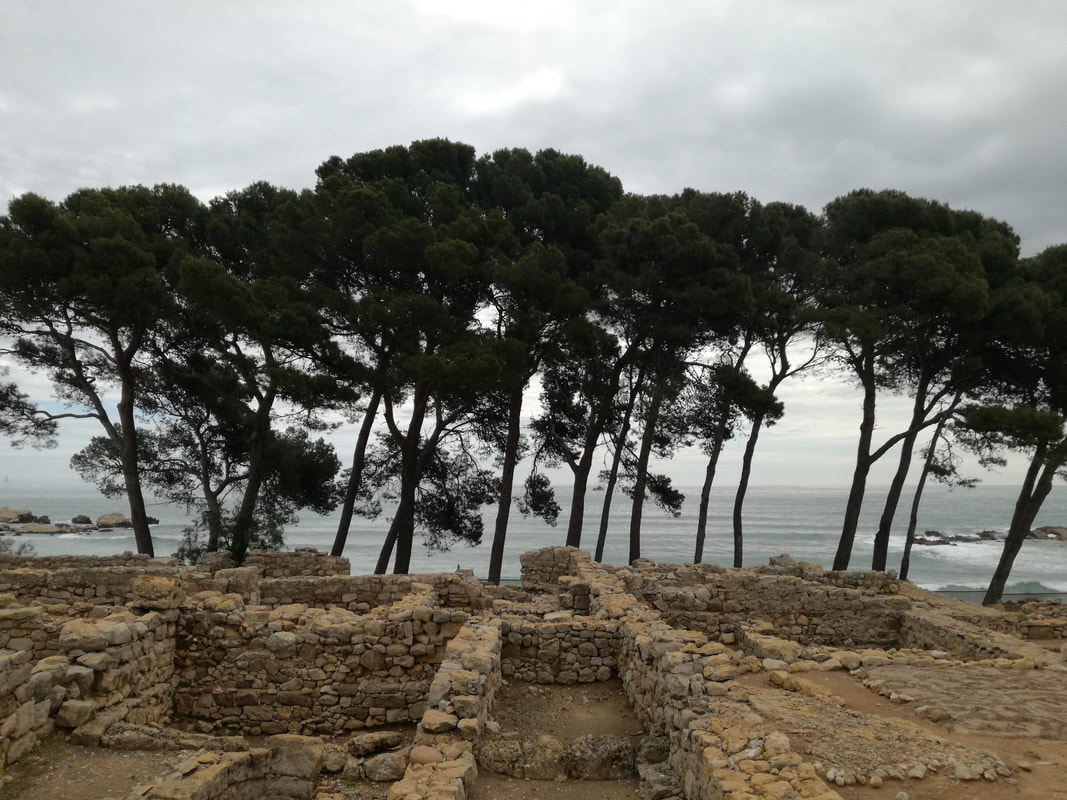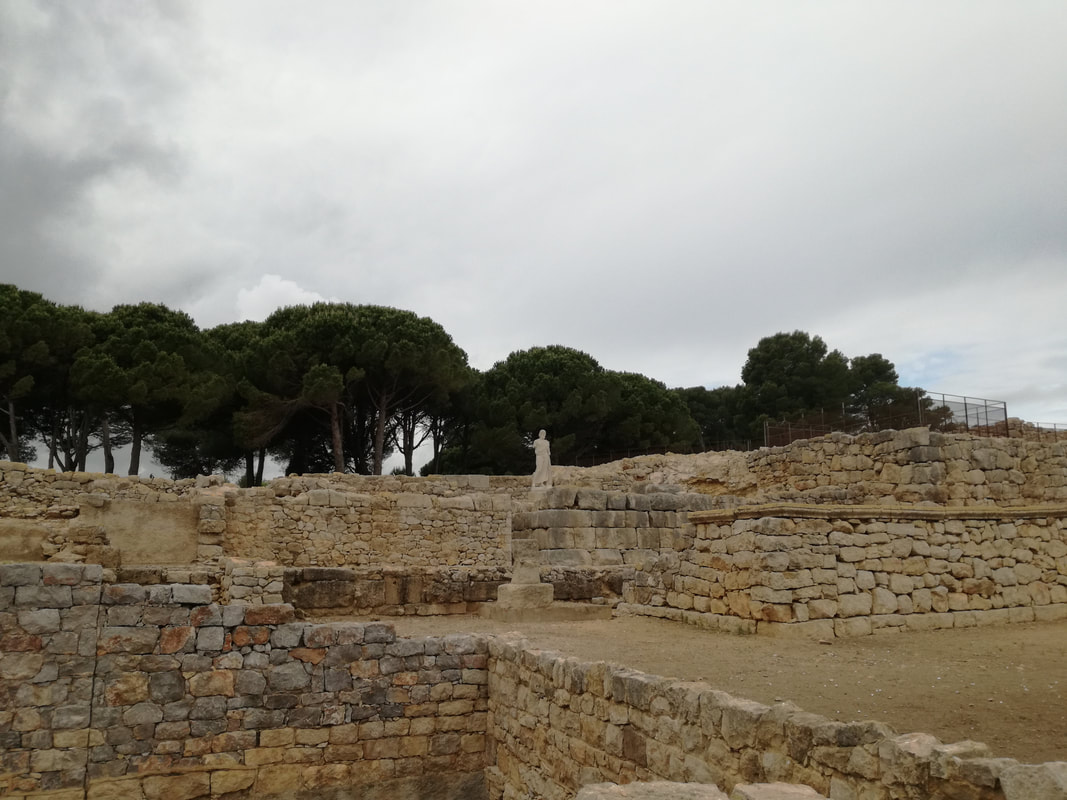|
Asclepius was the ancient Greek god of medicine and healing, worshipped in many parts of ancient Greece including Athens. He was in fact a semi – god, son of divine Apollo, and the mortal Koronis from Trikala in central Greece. The descendants of Asclepius, who themselves practised medicine, were known as the Asclepiads, the most famous of which was Hippocrates of Kos, often referred to as the “father of medicine”. The rod of Asclepius, a serpent-entwined rod wielded by the god, is used as a symbol of medicine even to this day. Asclepius was worshipped in sanctuaries called “Asclepieia”, one of the most important of which was in Epidavros in the Peloponnese, where a world famous ancient theatre is also situated. Importantly, the Asclepieia did not only serve as a place of worship but also offered health care, combining the medical science of the time with a variety of religious and magical elements. A holistic type of medical care was thus offered, where particular emphasis was given to the emotional state of patients. The centres were therefore built in locations of great natural beauty. Buildings such as theatres and gymnasiums, used by patients for physical exercise and recreation, were constructed next to where physicians practised medicine. Most of the above is probably known to anyone with an interest in Greek mythology. How many of you are aware, however, that the ruins of a sanctuary to Asclepius can be found in the most unlikely of regions, thousands of miles from Greece? The city Ἐμπόριον (Greek: Ἐμπόριον, Emporion, meaning “trading place” – “market”) was founded in the 6th century BC by Greek colonists from Phocaea (an ancient Ionian Greek city). It is in present day Catalonia, Spain, a short drive from the medieval city of Girona and a 1 hour and 40 minutes’ drive from Barcelona. The colony was founded for trading purposes and the initial settlement (Palaia Polis) was followed by a second one (Neapolis) the remains of which you can visit today. Part of the Empuries Ruins Overlooking the Mediterranean Sea The ruins of Emporion (now called Empuries), lie facing the Mediterranean Sea in an exceptionally beautiful setting. There is an archaeological park and the branch of the Archaeology Museum of Catalonia in Empuries (MAC-Empuries) offer visitors an enriching experience. A visit to the Greek city and the adjacent Roman one (that was subsequently built after the Romans arrived in the 2nd century BC), can be followed by a tour through the museum. The museum contains representative objectives from the excavations that commenced about 100 years ago. Beautiful Setting of Empuries Ruins There are many interesting artefacts to observe but without doubt the most impressive one is a beautifully refurbished statue of Asclepius which was found in 1909 (see top of page). The statue is made of both Pentelic and Parian marble. It once stood in a small sanctuary dedicated to the god. A replica of the statue has been placed in the ruins so you can see Asclepius gaze towards the Mediterranean Sea, to where he originally came from. Replica of Asclepius Statue in the Ruins A trip to the Girona region is full of treats for the scientific traveller (including some great cafes and bars to digest your knowledge in) to be described in following posts! If on the other hand you are more interested in the Asclepieia and in particular the ruins of the one located on the foot of the Athens Acropolis, checkout the Scientific Secrets of Athens guide.
Comments are closed.
|
- MY SCIENCE WALKS
- SHORT BIO
-
STELLARIUM RESOURCES
- Introduction
- Astronomy and the Odyssey
- Circumference of the Earth (Eratosthenes)
- Circumference of the Earth (Posidonius)
- Distance to the Sun (Aristarchus)
- Size of the Moon (Aristarchus)
- Distance to the Moon (Hipparchus)
- Lunar eclipse of Alexander the Great
- Journey of Pytheas
- Babylonian Cycles
- Direction to Mecca
- Great Conjunction of 1166
- Medieval supernovas
- Chinese pole star
- Sidereal day of Aryabhata
- NAVIGATING WITH THE STARS
- ANTIKYTHERA MECHANISM
- BOOKS & COURSES
- TRAVEL BLOG
- Contact Me




 RSS Feed
RSS Feed
